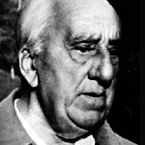Henry Van De Velde was born in Antwerp, Belgium in 1863.
The son of a wealthy chemist, he initially studied painting.
Influenced by his admiration forRusking, Morris and Voysey, he redirected his efforts as a designer.
In 1901 Van de Velde was invited to Weimar as consultant to the craft industries of the Grand Duchy of Saxe-Weimar.
Five years later he became director and designer of the new Grand Ducal School of Arts and Crafts which he based on Mackintosh's Glasgow School of Art.
Van de Velde adhered to the Utopian idea that architects could reform society through design.
He believed that 'Ugliness corrupts not only the eyes, but also the heart and mind'. Borrowing from his own Flemish background and the English Arts & Crafts movement, Van de Velde developed a highly detailed, style.
Using concrete as an expressive element, he created ornamental designs and ornate interiors which directly influenced the Art Nouveau movement. Van de Velde left Germany when World War II broke out. He died in Oberagen, Switzerland in 1957.
